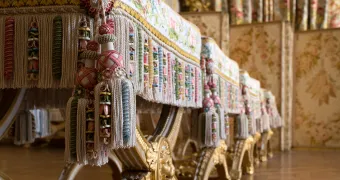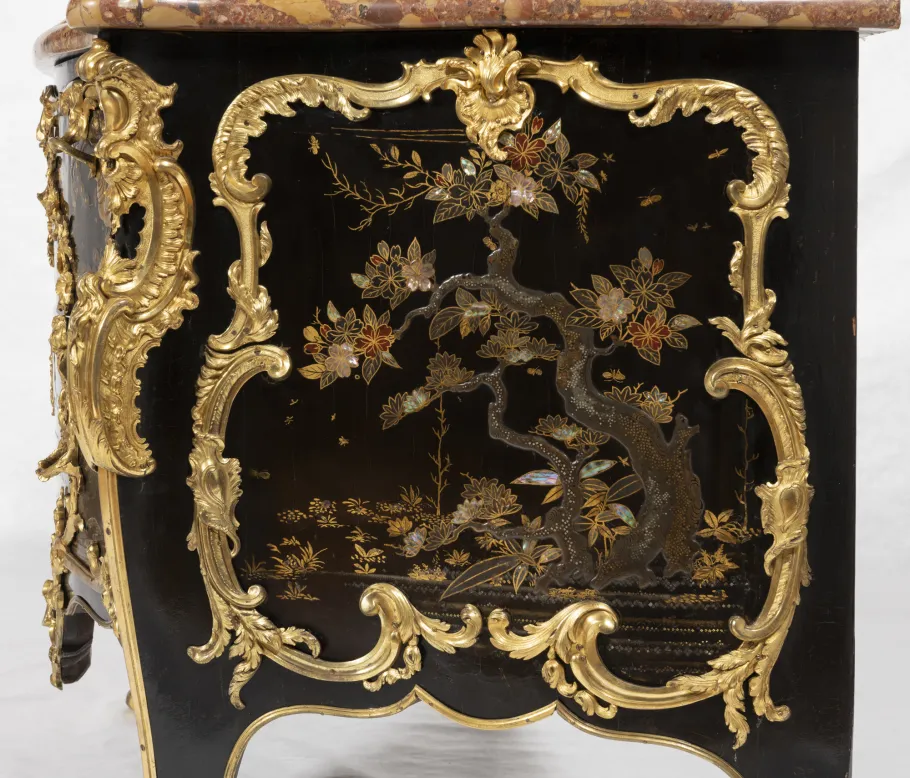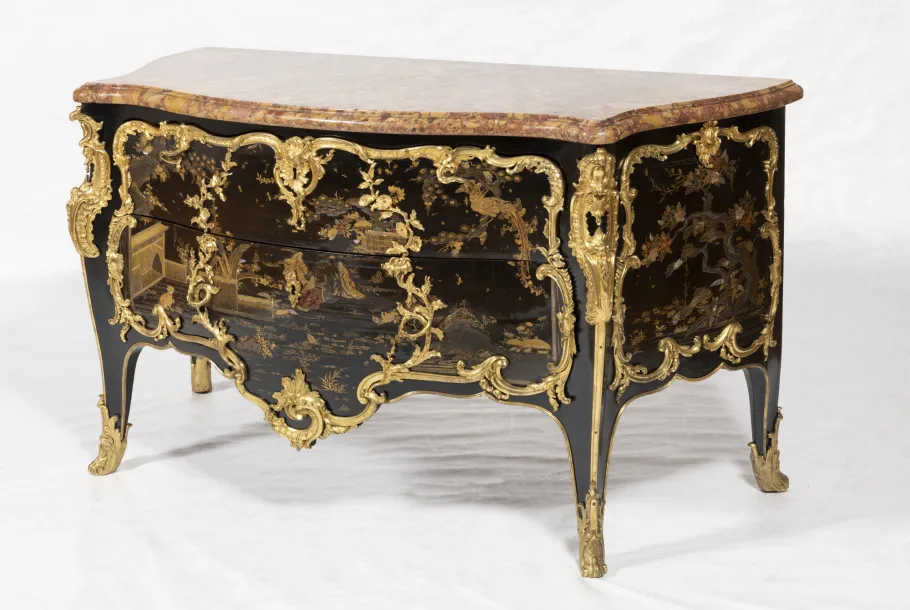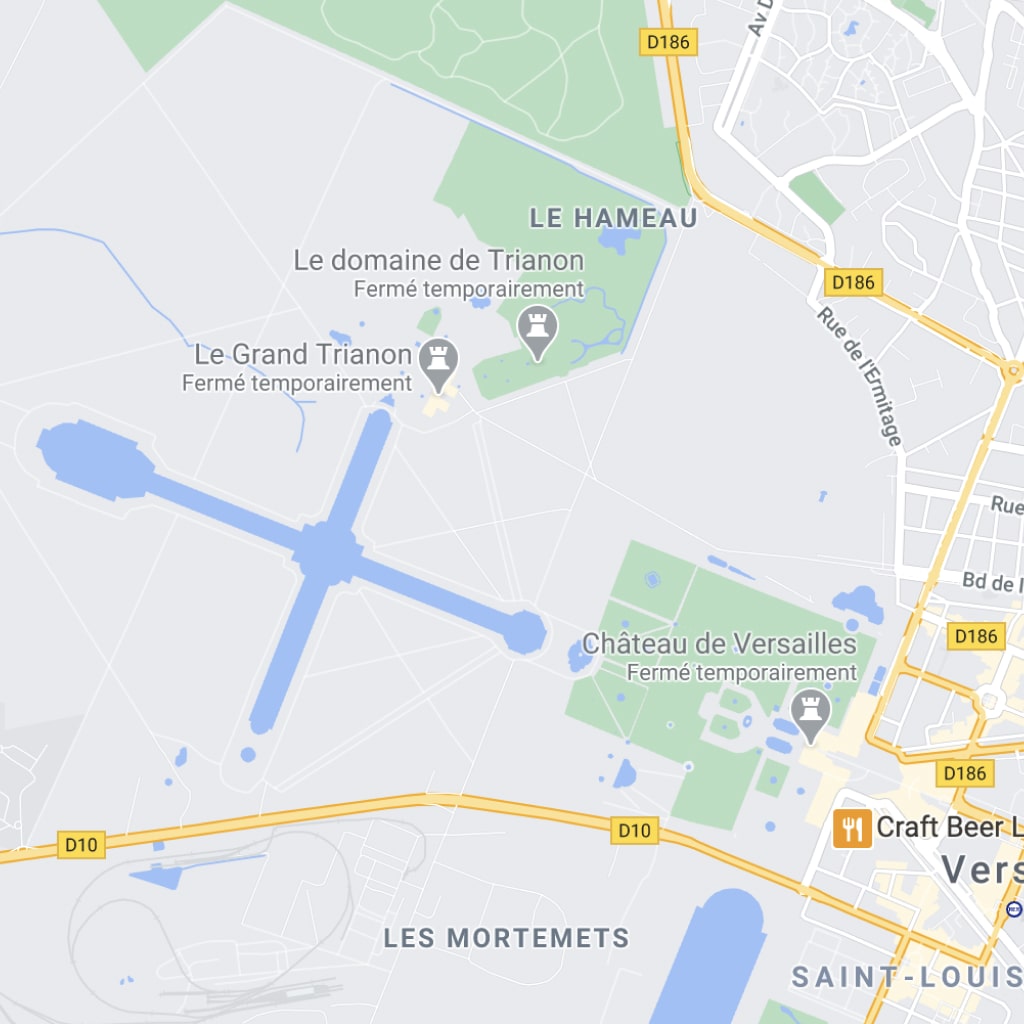An exceptional commode in Japanese lacquer, delivered in 1745 for the Dauphine Maria Teresa Rafaela of Spain, has been returned to the Palace of Versailles. The item, made by Bernard Van Reisen Burgh, one of the most famous Parisian cabinetmakers, known as "BVRB" (1700-1760), has been described as “one of the finest commodes in the world”. Its acquisition is an important event.

Acquisition of a Van Riesen Burgh masterpiece
A piece of furniture for the Dauphine
The commode was delivered to the Palace a few days before the arrival of the Dauphine, Marie-Teresa Rafaela of Spain (1726-1746) – who married Louis of France on 23 February 1745 –, and remained there until the Revolution. After the sudden death of the Infanta, it continued to adorn the chamber of the new Daupine, Maria Josepha of Saxony. It was later moved to the Count of Provence’s and then the Countess’ respective apartments in the South Wing.
Described on several occasions as "one of the finest commodes in the world", it left France in the 1980s before its Versailles origins had been established. It was not until 1998, after it had been in the USA for nearly 20 years, that the number "1343" written on the back was identified as corresponding to the entry in the Royal Furniture Treasury Journal:
"To serve in the chamber of Madame la Dauphine at Versailles.
N° 1343 – commode in old Japanese lacquer, black background with Japanese pagodas, birds and animals, curved top in brocatelle marble with scrolls, two large draws with locks at the front, decorated on the front and sides with gilded bronze carvings forming compartments and corners, matching feet, 5 feet long, 25 inches deep in the middle and 32 inches high."
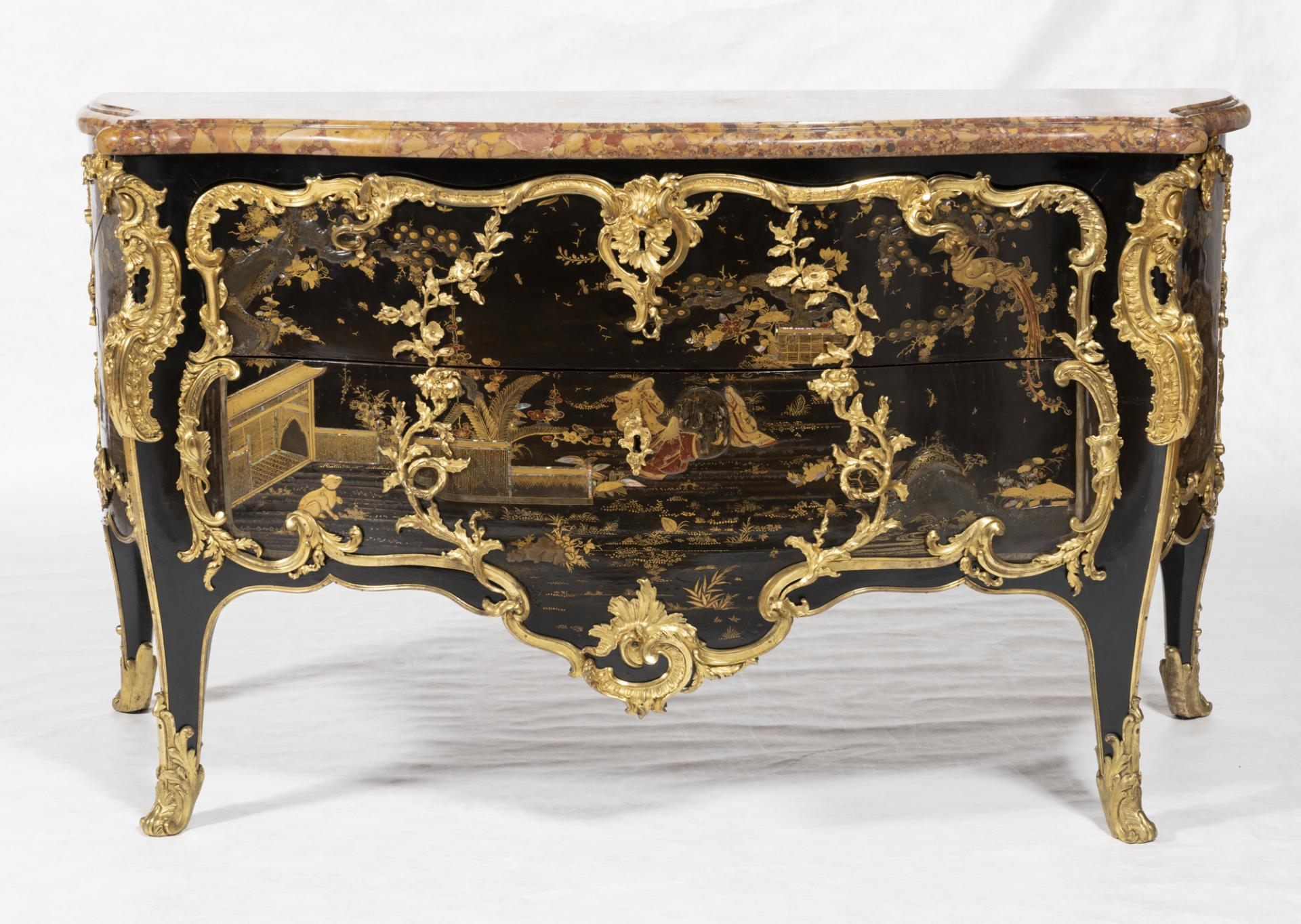
Commode of Bernard Van Riesen Burgh
© EPV/ Christophe Fouin
An exceptional acquisition
The acquisition of this commode by the Palace of Versailles is an exceptional event due to its rare character and the unique prestige of Japanese lacquer furniture, as well as the item’s exceptional quality and the opportunity to return it to its exact original position in the Queen’s Apartments. Particularly rigorous scientific study was carried out at the Centre for Research and Restoration of the "Musées de France", combining multiple techniques including some of the most recent ones, and examining in particular the lacquer panels, bronze work, ink inscription and the structure of the commode. The study confirmed the Japanese origin of the panels as well as the perfect cohesion of the item. After consultation with the competent bodies and various experts, it became clear that this acquisition was an important step in the policy to refurnish the Palace of Versailles. The generous legacy by Ms Jeanne Heymann, who specifically wanted to contribute to the return to Versailles of furniture that belonged there before the Revolution, has allowed this new page in the palace’s history to be written.
This exceptional commode can now be admired in the Queen’s Apartments.
